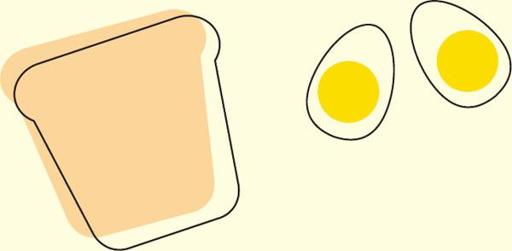The Mad, Mad, Mad, Mad Sixties Cookbook (13 page)
Read The Mad, Mad, Mad, Mad Sixties Cookbook Online
Authors: Rick Rodgers

Technology in the post-war, space-age 1940s and ’50s gave birth to the convenience foods craze. Foods that were notoriously difficult to make from scratch were now offered prepared and prepackaged. What began as an offering of single items like orange juice concentrate and quick-cooking rice morphed into a whole menu of ready-made foods.
Some were instant hits—frozen fish sticks and tubs of frosting—while some never quite took off—cheeseburger in a can, anyone? The rise of convenience food meant an increase in the personal fortunes of places like the fictional Sterling Cooper ad agency on
Mad Men
, as manufacturers threw big bucks at Madison Avenue. Introducing new products that changed the way people had been thinking about food for hundreds of years required a lot of creative advertising. How else to explain that by adding water to little white flakes, you could get instant mashed potatoes? Until Reddi-wip, the only thing squirting out of an aerosol can was insecticide (even shaving cream came later).
The processed food revolution was sponsored, sung about, and of course, televised. While product-centri cookbooks and inventive new recipes (usually distributed to the public for free) were still used, broadcasting demanded more than just words. Slogans, jingles, and even dances were invented to schlep product.
To sell their canned barbecue sauce and beef in the Sixties, Libby’s created a commercial to introduce “a brand new dance” called the Sloppy Joe. Teenagers took bites of imaginary sandwiches and then rubbed their tummies to the tune of “just heat, and eat, and swing to the beat!” It’s a little piece of advertising gold well worth looking up on YouTube. (We want to know where we can get those nifty sweatshirts that say “Beef”—yes, in actual quotes—and “Pork.”)
STACKED SALMON AND EGG SALAD SANDWICH
MAKES 8 SERVINGS
In the world of Sixties social status, sometimes adversaries had to be taken out over food. Did the neighborhood hussy, we mean
divorcée
, hit on your husband? Caught someone cheating in bridge club? Rather than freak out (or flip a table), a gentler way to defeat your foes is to showcase your superior culinary skills. Bring this frosted treat to the table, cut into it and—
bam!
—reveal its layers of pretty pink-and-yellow layers. Checkmate.
SALMON SALAD
1 pound salmon fillet with skin
Salt
Freshly ground black pepper
2 tablespoons mayonnaise
1 small celery rib, minced
Hot red pepper sauce
EGG SALAD
3 hard-boiled eggs (see
page 24
), peeled and finely chopped
2 tablespoons mayonnaise
3 tablespoons minced scallion, white and green parts
Salt
Freshly ground black pepper
1 unsliced loaf white bread (about 1¼ pounds)
12 ounces cream cheese, at room temperature
½ cup mayonnaise
1 tablespoon fresh lemon juice
Fresh watercress sprigs, canned pimiento slices, and sliced green or black olives, for garnish
1.
To make the salmon salad, position a rack in the center of the oven and preheat to 400°F. Lightly oil a baking sheet. Place the salmon on the baking sheet, skin side down. Season with ¼ teaspoon salt and ¼ teaspoon pepper. Bake until the salmon looks opaque when flaked in the center with the tip of a knife, about 20 minutes. Let cool completely.
2.
Flake the salmon, discarding the skin, and place the salmon meat in a medium bowl. Add the mayonnaise and celery and mix. Season with salt and hot red pepper sauce.
3.
To make the egg salad, mix the eggs, mayonnaise, and scallion in a medium bowl. Season with salt and pepper.
4.
Slice the bread horizontally into 4 equal layers. Place the first bread layer on a large sheet of plastic wrap. Spread with half of the salmon salad. Top with the following bread layer, then spread with the egg salad. Add the next layer of bread, the remaining salmon salad, and the final top bread layer. Tightly wrap the stacked layers in plastic wrap, using more wrap as needed. Refrigerate for at least 1 hour or overnight.
5.
Mix the cream cheese, mayonnaise, and lemon juice together in a medium bowl using an electric mixer on high speed until smooth. Unwrap the stacked bread. Use a metal icing spatula to spread the cream cheese mixture smoothly and evenly over the top and sides of the bread. Decorate the top with watercress, pimiento, and olives. Using a wide spatula, transfer to a serving platter. Refrigerate, uncovered, for at least 1 and up to 4 hours.
6.
Cut into ¾-inch-thick slices and transfer to dinner plates. Serve chilled.


CHAPTER 4
COMPANY FOOD: MAIN COURSES

W
hile everyone is quick to remember the Sixties for its convenience food and canned everything, the decade also ushered in America’s modern gourmet renaissance. The woman who first brought French cooking into housewives’ hearts before a single Julia Child book was published? Fashion and food icon Jacqueline Kennedy.
Not all of the main courses served in the Sixties were gourmet of course, but they were, at least those served to “company,” downright delicious. We’ll take you step-by-step on our own “little trip around the world” with entrées from Sweden to Puerto Rico, from Staten Island to Malibu. We’ve got beef, pork, pasta, poultry, seafood, and even vegetarian. You don’t have to be a Jackie or a Julia to whip up a midcentury feast. Cross our hearts.

Camelot in the Kitchen
Although political pundits thought women would hate the upper-class debutante, Jackie Kennedy was wildly popular. Women across the country looked to her as a beacon of continental sophistication. They dressed like her, styled their hair like her, and hoped to entertain like her.
Kennedy made big news when she brought a private chef with her to the White House—the first time since Thomas Jefferson that caterers and housekeepers wouldn’t be in charge of state dinners. After interviewing him in French, Kennedy hired Paris-trained René Verdon. Where previously international cuisine had been thought of as unpatriotic, it was suddenly
en vogue
. His menus were enthusiastically reported by the press; his White House debut, a lunch for then-British Prime Minister Harold Macmillan, even made the front page of the
New York Times
.
One of the first chefs to embrace fresh, locally grown produce, Verdon planted vegetables on the White House roof and snuck herbs into the East Garden. He quit in a “Gallic huff” according to
Time
magazine when new President Lyndon Johnson insisted the White House kitchen use frozen vegetables. He was the author of five cookbooks and proprietor of several successful restaurants, including Le Trianon in San Francisco, where Rick enjoyed many a
soupe a l’oignon
in his college years.

